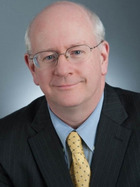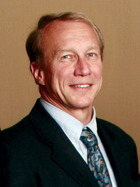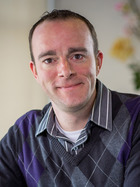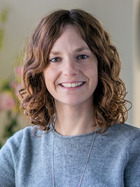Another article from the Huffington Post written by Karen Diamond. Karin Diamond is a freelance writer, editor and communications specialist. She lives in Tariffville, Connecticut, with her husband and vivacious yellow dog. Karin holds a bachelor’s degree in English and Journalism and has worked as a newspaper reporter, city magazine editor, and in marketing communications for an arts nonprofit and an inner-city hospital. She blogs about the adventures of being a young adult living with -- and beyond -– disease at www.eyespeeledalways.com.
I have cancer.
I also have a quarter-sized beauty mark on my right hip. My dad has a matching one that's half-dollar-size and my sister's is the size of a dime. Same exact spot.
I have recurrent, chemo-resistant Hodgkin Lymphoma. It persists despite slews of drug combinations, radiation, two stem-cell transplants, immunotherapy, and clinical trials of chemicals only rats endured before me.
I now also have soft ringlets atop my head after 25 years of limp straw -- courtesy of chemo's kinking affect on my follicles; the gift of long, dainty fingernails passed down from my Nonna; and a warped left pinky toenail that just can't get it together, despite attempts to normalize it with polish.
I have three-inch scars within each armpit, holding together skin that was once sliced open to get out malignant lymph nodes. There is another slash across my trachea, where a tumor was pulled from my chest.
I also have lanky chicken arms that I love because they make me feel like a dancer, a booty worth shaking, mostly hazel eyes that change color with my wardrobe choice, and teeth so strong a cavity has yet to break through.
I have a catheter implanted in my chest that sticks out like a third nipple, but allows easy streaming of drugs, blood and fluids. My arm veins are too scar-ridden for IV use. The tubing is visible through my thin chest skin and gives me a robotic quality. Surrounding the nipple are thick, heavy scars, formed when my skin has groaned and stretched at the device's weight during four years of use.
I have a good man who loves me: sick me, healthy me, crazy me. He is strong, yet gentle, open-minded, compromising, patient, and thoughtful. He can be vocal at the right times and smartly quiet at the right times, too. He can fix anything, build anything, lift anything -- jump fences, ski glades, refurbish a piano, transform discarded wood into incredible art pieces. I have a Renaissance man who cuddles and supports me, but also pushes me past my boundaries to my best self, not allowing excuses -- in the gentlest way possible.
I have discolored scratches and patch marks all over my torso from chemo burning my tissues from the inside out. I bear the scars someone might guess I'd gotten from a horribly failed suicide attempt with a razor -- though they'd be wrong.
I have a good dog, a 60-pound, blonde ball of unbridled love. She is receptive and conscious -- playful or cuddly at all the right times. She is my trusty companion, my confidante. I love every drop of her slobber, every whiff of her doggy breath, every painful pinch from her paw as she tries to wriggle her way on top of me like a lap dog. I love every moment that I get to roll the silken softness of her ear in my fingers and smell its distinctive sweetness.
I have cancerous cells within my bones, spreading in a confined space, compromising the strength of my pelvis, my hips, my femurs, and my sacrum and encroaching on my vertebrae. This means compounded chronic pain.
I have intelligence and creativity that allow me to practice writing -- a craft that brings me an incredible amount of joy and fulfillment.
I have consistent anemia and compromised lung capacity, both side effects from toxic treatments, making it difficult at times to keep up, catch my breath, or stand up without seeing stars.
I have the habits of a 30-year-old woman: I have a book club, I walk and kayak and practice yoga. I cook as creatively and healthfully as I can. I love trying new restaurants and taking in good films, good books and good art. I read the New Yorker and Cosmo. I cuddle up nightly with my husband and dog to watch Brian Williams give the news, while we eat dinner cross-legged on our beloved couch. I like pedicures and natural lip gloss, statement jewelry and scarves. I love NPR and MTV.
I have been living with cancer since age 26 -- living with the disease, the side effects, the treatment, the anguish, the questioning, the reconciliations, and the adaptations.
I own a home with my husband that was once a 19th century church, filled with history and love. It sits on a dead-end street, butting up to protected wooded trails along a mountain ridge. A river fit for kayaking and paddle-boarding is a short walk away.
I have endured treatments so harsh they left me with the sex drive of an elderly woman, stripped me of my fertility and robbed me of the possibility of pregnancy.
I have a family that can handle my wildly independent and indignant ways, somehow knowing how and when I need to be coddled even when I don't understand it myself. And, I have friends -- great friends. Each offers such special qualities, and they all meld harmoniously into one big lovefest that I can tap into at any time. I have perfect strangers that send me love and light and hope and big pushes every day.
I have very few viable treatment options left. We've tried most everything. My life depends on the speed of cancer research to save me.
I have cancer, and I'm eating a plum on a lounge chair in the unexpected spring sun. I have toxic chemotherapy currently working to kill every rapidly dividing cell in my body, but the sound of my husband's saws whirring in his workshop, the site of Sam Dog rolling her tennis ball down the driveway to any passerby who'll throw with her, and the everyday normalcy of car doors shutting and far-off radios playing The Dead makes it somehow okay.
I have a good, no a great, no an utterly balls-out fabulous life and more importantly, the capacity to understand its impermanence. Sure, I have some things that I don't need, ahem, cancer, but I have everything I do need. Right here. Right now. I revel in that comfort and wonder how I got it so good.
Sure, I lose perspective. Sometimes I want to leave it all, unable to handle the weight of my fate staring me in the face. But then good days come, and I forget about the cancer, the chemo, the infertility, the scars for a while, so blinded by the gratitude that I get to be here, to do this, to enjoy this world and the people in it.
I have cance

 Oliver W. Press, MD, PhD
Oliver W. Press, MD, PhD Brian Tomlinson, MPA, BSW
Brian Tomlinson, MPA, BSW Sarah Kelly, MSW
Sarah Kelly, MSW
 Oliver W. Press, MD, PhD
Oliver W. Press, MD, PhD Brian Tomlinson, MPA, BSW
Brian Tomlinson, MPA, BSW Sarah Kelly, MSW
Sarah Kelly, MSW

 From
From 









